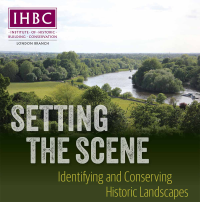The winning design has been chosen in the architectural competition for Preston’s iconic bus station and new Youth Zone Plus.
New York-based John Puttick Associates was chosen from the five anonymous shortlisted entries by the judges.
This was the same design chosen by people as their favourite in the public vote.
The plans will see a multi-million pound investment in the Grade II listed bus station site, to create a vibrant public space and a home for the new Preston Youth Zone Plus – while preserving the building’s unique brutalist architecture.
The architectural competition was run by the Royal Institute of British Architects (RIBA), on behalf of Lancashire County Council and Preston Youth Zone.
The public voted for their favourite design in July, at a special two-day exhibition held in the bus station and online. A total of 4,215 votes were cast by people choosing their favourite design for a new youth zone.
The votes by the public were taken into consideration by the judges, as well as architectural considerations.
Jennifer Mein, leader of Lancashire County Council, said: ‘We always knew that the bus station had a global appeal, and the fact that the winning firm comes from New York reinforces this.
‘We’re delighted that a strong design has been chosen for the new Youth Zone Plus and we’ll now be working hard to get it built.
‘This is a significant investment in one of Preston’s most well-known buildings, which will bring exciting new facilities for our young people, for this generation and for future ones.
‘It’s an exciting time for the city, with improvements taking place on Fishergate and the first steps in the redevelopment of Preston Market. These plans are all part of the Preston, South Ribble and Lancashire City Deal, which is creating new job opportunities, providing new housing and making it easier for people to get around.’
John Puttick, the architect behind the chosen design, said: ‘The Preston Bus Station development is an important opportunity to create a destination that makes a genuine difference for both visitors and the local community.
‘The three components of the project – the revitalisation of the modernist bus station, the new OnSide Youth Zone, and a large outdoor public space – offer a rich mixture of uses and the challenge of sensitively introducing contemporary design to the existing setting.
‘We are delighted to have been selected as the winners of the competition and are excited to develop the design with the client and stakeholders. We hope to play a game of football on the roof once the project is complete.’
The county council and Preston Youth Zone will now work with the architects, John Puttick Associates, to agree on the final design, with the planning application submitted later this year.
Planning approval will be required for the Youth Zone Plus, as well as listed building consent and approval from Historic England, before building work can start.
Find more details…
Background info via IHBC NewsBlogs



